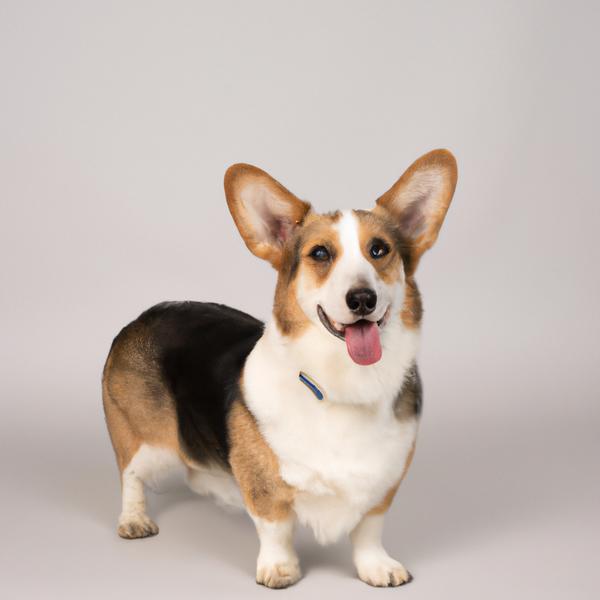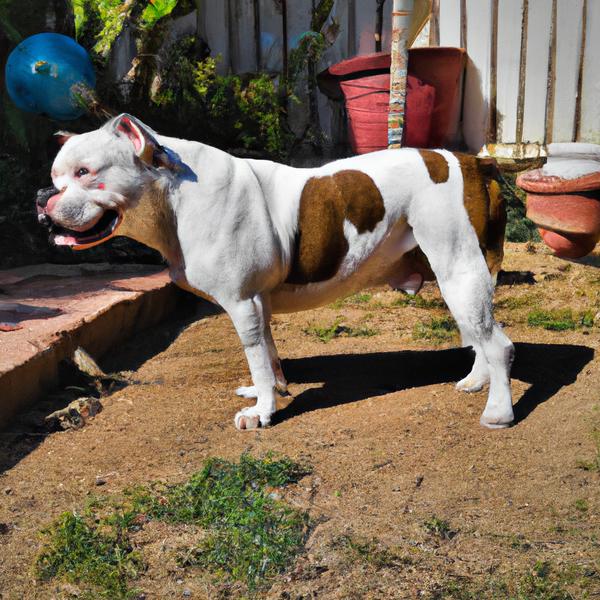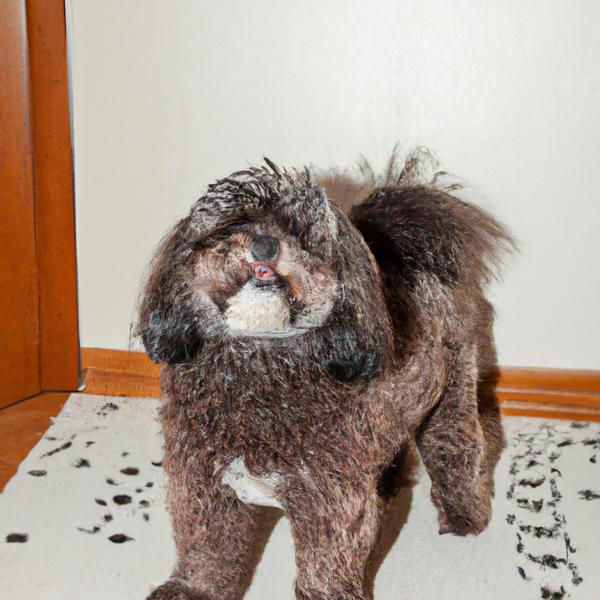Poo-Shi vs. Italian Papihound: Breed Differences and Similarities
Hypoallergenic
Are Poo-Shis or Italian Papihounds hypoallergenic, or neither?
Unfortunately, neither Poo-Shi nor Italian Papihound are hypoallergenic, which may not make them the best choice for dog lovers who suffer from pet allergies.
Temperament
What are the personalities of Poo-Shi and Italian Papihound dogs?
Active
Alert
Intelligent
Confident
Going
Trainable
Fearless
Keen
Faithful
Instinctual
Charming
Happy
Agile
Energetic
Alert
Intelligent
Friendly
Affectionate
Companionable
Athletic
Mischievous
Shedding Level
Do Poo-Shis shed more than Italian Papihounds, or which breed sheds more, Poo-Shis or Italian Papihounds?
Poo-Shis are moderate shedders, but regular brushing can reduce shedding and maintain coat health.
Italian Papihounds shed very little hair, making them a great choice for those who dislike excess hair in the house.
Watchdog Ability
Which dog breed makes a better watchdog, the Poo-Shi or Italian Papihound?
Poo-Shis make excellent watchdogs - they're vocal and protective of their territory.
Avoid Italian Papihounds as watchdogs - they're not effective.
Origin
What is the origin of Poo-Shi and Italian Papihound dog breeds?
United States
United States
Ancestry
What are the origins of Poo-Shi and Italian Papihound breeds?
Shiba Inu and Poodle
Papillon and Italian Greyhound
Breed recognition
Which kennel clubs recognize/register Poo-Shi and Italian Papihound?
ACHC = American Canine Hybrid Club
DBR = Designer Breed Registry
DDKC = Designer Dogs Kennel Club
DRA = Dog Registry of America, Inc.
IDCR = International Designer Canine Registry®
ACHC = American Canine Hybrid Club
DRA = Dog Registry of America, Inc.
IDCR = International Designer Canine Registry®
Date of Birth
When were Poo-Shi and Italian Papihound breeds first developed?
Unknown
Eye Color Possibilites
What are the eye colors of Poo-Shi and Italian Papihound dogs?
Brown
Brown
Nose Color Possibilites
What are the natural nose colors of Poo-Shi and Italian Papihound?
Black
Black
Coat Color Possibilites
What are the natural colors of the coat for Poo-Shi and Italian Papihound breeds?
Cream
White
Brown
Sable
Black
Fawn
Gray
Red
Fawn
Blue
Black
White
Cream
Coat Length
What is the typical coat length for Poo-Shi and Italian Papihound breeds?
Poo-Shis are known for their coat length.
Italian Papihounds have medium-length coats.
Coat Density
What is the density of the coat of Poo-Shi and Italian Papihound?
Coat Texture
What is the hair texture of Poo-Shi and Italian Papihound?
Wavy
Straight
Litter Size
What is the usual litter size for Poo-Shi and Italian Papihound?
Poo-Shi and Italian Papihound, can have a litter of 2-4 puppies each on average. Nonetheless, it's important to keep in mind that litter size can differ significantly between individual dogs. Various factors such as the mother's health, breeding history, and genetics can have an impact on litter size.
Adaptability
Poo-Shi and Italian Papihounds are known for their adaptability and versatility. They are capable of adapting well to a wide range of lifestyle changes and living environments, making them great companions for families and individuals of all lifestyles.
Health Issues
Between Poo-Shi and Italian Papihound, which breed is more prone to health problems?
Poo-Shi and Italian Papihound breeds are generally considered to be healthy. However, like all breeds, they are susceptible to certain health issues and it is important to keep an eye out for them and address them with your veterinarian as needed.
Major Concerns
What are the major health concerns for Poo-Shi and Italian Papihound breeds?
Progressive Retinal Atrophy
Glaucoma
Epilepsy
Addison's Disease
Mitral Valve Disease
Cancer
Patellar Luxation
Epilepsy
Progressive Retinal Atrophy (PRA)
Minor Concerns
What minor health issues should be kept in mind when owning Poo-Shi and Italian Papihound?
Patellar Luxation
Entropion
Hip Dysplasia
Corneal Dystrophy
None Known
Occasional Tests
What occasional tests are recommended for Poo-Shi and Italian Papihound breeds?
Eye
Hip
Blood
Knee
Heart
X-Rays
Physical Examination
X-Rays
Eye Examination
Physical Examination
Electrocardiogram
Energy
How do the energy levels of Poo-Shis and Italian Papihounds compare?
For those who lead a balanced lifestyle, Poo-Shi and Italian Papihound breeds may be a good choice as they have an average energy level.
Social Needs
Poo-Shi vs Italian Papihound social needs comparison
Poo-Shi and Italian Papihound have above average social needs compared to other breeds. They thrive in environments where they have a lot of interaction with humans and other dogs.
Exercise Needed
Poo-Shi vs Italian Papihound exercise need comparison.
The Poo-Shi and Italian Papihound breeds are breeds that require minimal physical activity to maintain a healthy lifestyle. They are ideal for people with busy lifestyles, elderly people or those who have limited mobility. They also make great pets for those who live in small apartments or have limited outdoor space.
Sleeping Need
Which of the two sleeps the most/least: Poo-Shi or Italian Papihound?
Poo-Shi and Italian Papihound dogs tend to sleep less than some other breeds, but it's still important for them to get adequate sleep in order to maintain good health.
Tendency to Bark
Do Poo-Shis or Italian Papihounds bark more/less frequently?
The Poo-Shi is a vocal breed that frequently barks and howls, and may not be suitable for those seeking a quiet companion.
Italian Papihound dogs are generally less vocal than other breeds and only bark when necessary, such as to alert their owner or communicate.
Mouthiness
Mouthiness Comparison: Poo-Shi vs Italian Papihound?
Roaming urge
Poo-Shi vs Labrador: Running away tendency?
Prey Drive
Poo-Shi or Italian Papihound - which breed has a higher level of prey drive?
Activity Level
Which breed has higher energy, Poo-Shis or Italian Papihounds?
Both Poo-Shi and Italian Papihound are medium-energy dogs that enjoy socializing and playing with other dogs. They may engage in casual or sustained games of chase, and occasionally have bursts of barking or racing around the house.
Tolerance of being left alone
Walks per Week
How many miles should Poo-Shi or Italian Papihound walk each week?
There's really no limit to how far you walk your dog as long as they're comfortable. For Poo-Shi, it's at least 8 miles / week. Just remember to build distance and stamina gradually over time.
There's really no limit to how far you walk your dog as long as they're comfortable. For Italian Papihound, it's at least 9 miles / week. Just remember to build distance and stamina gradually over time.
Activity per Day
Do Poo-Shis or Italian Papihounds require more exercise?
In general most Poo-Shis usually need at least 25 minutes of exercise daily. This can be spread across the day and include all sorts of high-energy activities, like walking, running and playing.
In general most Italian Papihounds usually need at least 45 minutes of exercise daily. This can be spread across the day and include all sorts of high-energy activities, like walking, running and playing.
Grooming
Which breed is easier to maintain in terms of grooming, Poo-Shis or Italian Papihounds?
Poo-Shis require significant grooming, including regular trims and professional grooming assistance to maintain their coat. They may also require frequent bathing to keep their coat and skin healthy.
The Italian Papihound has low grooming needs and is easy to maintain.
Brushing Frequency
What is the recommended brushing frequency for Poo-Shi and Italian Papihound dogs?
Ideally, Poo-Shi should be brushed at least 2 or 3 times a week (preferably daily) improve shedding.
Italian Papihound should be brushed at least once a week. Of course you can give them more frequent brushes if you find that they are still shedding a lot
Brushing Tools
What brushing tools are used for Poo-Shis and Italian Papihounds?
Pin Brush
Slicker Brush
Comb
Nail Clipper
Pin Brush
Comb
Nail Clipper
Cups
How much food should be given to Poo-Shi or Italian Papihound in cups?
For an average 15-20 pound (7 - 9 kg) Poo-Shi feed 2 cups daily. But, keep in mind, the amount you feed is going to be dependent on the quality of the food you are feeding.
For an average 8-10 pound (4 - 5 kg) Italian Papihound feed 1 cups daily. But, keep in mind, the amount you feed is going to be dependent on the quality of the food you are feeding.
Daily Cost
Which breed has a higher daily cost, Poo-Shi or Italian Papihound?
The average cost of a Poo-Shi is somewhere $1.70 - $2.00 per day.
The average cost of an Italian Papihound is somewhere $1.00 - $1.40 per day.
Monthly Cost
Which breed has a higher monthly cost, Poo-Shi or Italian Papihound?
The average per month expenses of a Poo-Shi is between $48 - $63. This makes an average of $576 - $756 per year. It will be on the higher side when the dog is still small because it will need more frequent visits to the vet, shots.
The average per month expenses of an Italian Papihound is between $35 - $42. This makes an average of $420 - $504 per year. It will be on the higher side when the dog is still small because it will need more frequent visits to the vet, shots.
Intelligence
Comparing Intelligence: Poo-Shis vs Italian Papihounds
The Poo-Shi and Italian Papihound breeds are considered very intelligent and easy to train.
Sensitivity Level
How do Poo-Shi and Italian Papihound compare in sensitivity?
These breeds are more sensitive than others and easily overwhelmed by new surroundings and people. Poo-Shi and Italian Papihound need gentle handling and a calm, stable home environment with positive reinforcement training.
Affection Dependance
Which is the more affectionate dog breed: Poo-Shi vs Italian Papihound?
Apartment Friendly
Which breed is more apartment-friendly: Poo-Shi or Italian Papihound?
Poo-Shis make excellent apartment dogs, being fairly active indoors and not requiring a yard.
Italian Papihounds are good apartment dogs as long as they get enough exercise and stimulation outside of the apartment.
Child Friendly
Do Poo-Shis or Italian Papihounds have a friendlier temperament towards children?
Poo-Shis are good with kids if socialized and trained from a young age.
Italian Papihounds have an average level of friendliness towards children.
Senior-friendly
Which dog is more suitable as a pet for the elderly - Poo-Shi or Italian Papihound?
Cat Friendly
Do Poo-Shi or Italian Papihound breeds have a better compatibility with cats?
Poo-Shis are average in their friendliness toward cats and tend to do well with them, especially if raised together.
Italian Papihounds are good with cats, but early training is needed to prevent chasing behavior.
Dog Friendly
Which breed is more sociable with other dogs: Poo-Shi or Italian Papihound?
Poo-Shis are friendly and active companions, and can be good family pets, though their friendliness towards other dogs may vary.
Italian Papihounds are average in their friendliness towards other dogs, and socialization can help.
Pet friendly
How do Poo-Shi or Italian Papihound dogs interact with other pets?
Stranger Friendly
Which breed is more friendly with strangers: Poo-Shi or Italian Papihound?
Poo-Shis are averagely friendly around strangers but benefit from early socialisation.
Italian Papihounds are friendly but may bark at strangers, and training is easy due to their intelligence.
Playfulness
Which breed is more playful between Poo-Shi and Italian Papihound?
Poo-Shi and Italian Papihound are playful dogs. So, no matter how busy the day may get, the best thing you can do for Poo-Shi and Italian Papihound is to make time each day to play. It can be as little as 15-20 minutes, and it will mean the world to them.
Trainability
How do the trainability levels of Poo-Shis and Italian Papihounds compare?
Poo-Shis are usually easy to train but require consistency to fully obey commands.
Italian Papihounds are popular for their ease of training and quick learning ability.
Compare Poo-Shi with other breeds

Corgi Basset
Poo-Shi vs Corgi Basset

Old Anglican Bulldogge
Poo-Shi vs Old Anglican Bulldogge

Irish Doodle
Poo-Shi vs Irish Doodle

Paperanian
Poo-Shi vs Paperanian

American Neo Bull
Poo-Shi vs American Neo Bull

Cairn Australian Shepterrier
Poo-Shi vs Cairn Australian Shepterrier

Bergamasco Shepherd
Poo-Shi vs Bergamasco Shepherd

Bull Chow Terrier
Poo-Shi vs Bull Chow Terrier

Pootalian
Poo-Shi vs Pootalian

Torkie
Poo-Shi vs Torkie

Confetti Australian Shepherd
Poo-Shi vs Confetti Australian Shepherd

Yorkie Beagle
Poo-Shi vs Yorkie Beagle

